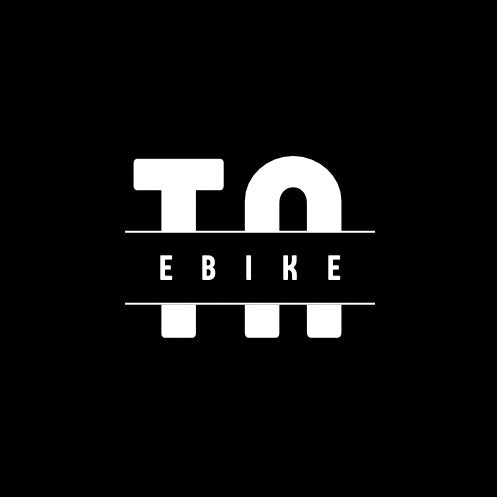Electric bikes (eBikes) are revolutionizing modern transportation, offering an eco-friendly and cost-effective alternative to traditional vehicles. At the heart of every eBike lies a crucial component that ensures smooth operation—the eBike controller. But what exactly is an eBike controller, and why is it so important? In this comprehensive guide, we’ll explore everything you need to know about eBike controllers, their types, functions, and how to choose the right one for your electric bike.
What Is an Ebike Controller?
An Ebike controller is the electronic brain of an electric bicycle. It manages power distribution between the battery, motor, throttle, pedal assist system (PAS), and brakes. This component ensures that the motor receives the appropriate amount of power based on rider input, providing a seamless riding experience.
Without a properly functioning controller, an eBike wouldn’t be able to regulate speed, power output, or braking efficiency. It essentially dictates how efficiently your eBike performs and how smoothly it responds to your commands.
How Does an Ebike Controller Work?
An Ebike controller functions by processing electrical signals from various inputs and adjusting power flow accordingly. Here’s a step-by-step breakdown of its operation:
- Power Supply – The controller draws power from the battery and regulates voltage and current before sending it to the motor.
- User Input Interpretation – It receives signals from the throttle, pedal-assist system (PAS), and sensors to determine how much power the motor needs.
- Motor Control – The controller sends electric pulses to the motor, adjusting speed and torque based on the input.
- Braking System Integration – Many controllers cut power when the brakes are engaged to improve safety and efficiency.
- Protection Mechanisms – The controller ensures safe operation by preventing overheating, short circuits, and overvoltage.
Types of eBike Controllers
Not all eBike controllers are the same. Here are the main types available:
1. Sine Wave Controllers (Smooth & Silent)
- Provides smooth acceleration and quiet operation.
- More efficient and better for high-performance eBikes.
- Ideal for longer battery life and improved motor longevity.
2. Square Wave Controllers (Basic & Affordable)
- Cheaper and easier to manufacture.
- Can produce motor noise and vibrations.
- Good for budget eBikes or simple builds.
3. FOC (Field-Oriented Control) Controllers (Advanced & Smart)
- Uses advanced algorithms for smooth power delivery.
- Offers better torque control and energy efficiency.
- Often found in premium eBike models.
Key Features of an eBike Controller
When choosing an eBike controller, consider these essential features:
- Voltage & Current Rating – Ensure compatibility with your battery (e.g., 36V, 48V, 52V) and motor wattage (e.g., 250W, 500W, 1000W).
- Pedal Assist & Throttle Integration – Supports PAS sensors and throttle for better control.
- Regenerative Braking – Some high-end controllers allow battery recharging while braking.
- LCD Display Compatibility – Works with digital screens to show speed, battery level, and ride data.
- Waterproofing – Protects against moisture and enhances durability.
How to Choose the Right eBike Controller?
Picking the right controller is crucial for your eBike’s performance. Here’s a quick guide:
- Match Voltage & Power: Ensure the controller matches your battery’s voltage and motor’s power rating.
- Determine Your Riding Needs: If you prefer smooth rides, opt for a sine wave controller. If you’re on a budget, a square wave controller works fine.
- Look for Extra Features: Bluetooth connectivity, regenerative braking, and LCD display compatibility can enhance your riding experience.
- Consider Waterproofing: If you ride in various weather conditions, choose a water-resistant controller.
Troubleshooting Common eBike Controller Issues
Even high-quality controllers can sometimes run into issues. Here are some common problems and how to fix them:
1. eBike Won’t Turn On
Check if the battery is charged and properly connected.Inspect the controller’s wiring for loose connections.
2. Motor Not Running or Weak Power
Verify throttle and pedal assist settings.Ensure the controller isn’t overheating or overloaded.
3. Display Not Working
Check the display’s wiring and compatibility with the controller.
4. Error Codes on LCD Screen
Consult your eBike’s manual for error code meanings.
Reset the controller or reconnect cables as needed.
Final Thoughts
The eBike controller is a vital component that determines how efficiently and smoothly your electric bicycle operates. Whether you’re upgrading your current setup or troubleshooting an issue, understanding how controllers work will help you make informed decisions.
Choosing the right controller tailored to your riding style and motor requirements will enhance your eBike experience, providing better efficiency, control, and longevity.
🔧 Need repairs or maintenance for your Ebike? Visit our Ebike repair service for expert assistance and top-quality service! We’ll ensure your Ebike runs smoothly and efficiently.

